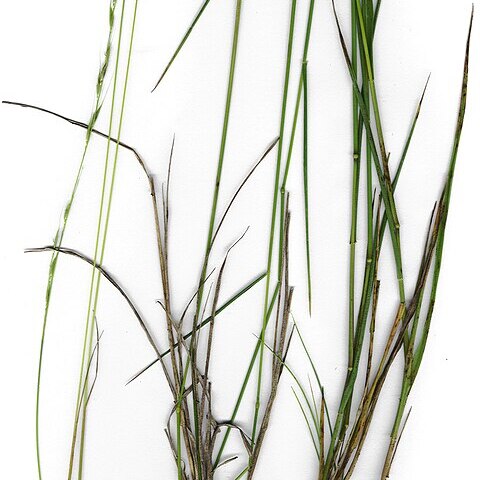Lemmas heteromorphous; the sterile ones (1 and 2) equal or unequal, almost always exceeding the glumes, compressed, usually cartilaginous, awned or muticous, 3-5-nerved, transversely rugose, tuberculate or smooth, the second one often with variously shaped callous appendages at the base; the fertile one (the uppermost) shorter than the sterile ones, often hinged with the second sterile one by basal callous knob-like appendages, usually 5-nerved, indurate but less so than the sterile ones, muticous, sometimes transversely rugose or tuberculate but more often smooth.
Annuals or perennials. Leaf-blades flat or rolled, often auricled, sometimes much reduced. Inflorescence a panicle, usually contracted, sometimes a raceme, rarely a solitary spikelet. Spikelets with mostly subequal glumes, shorter than or as long as the spikelet; sterile lemmas glabrous or hairy, 1 or both often transversely ridged or wrinkled, awned or awnless, the upper sometimes with basal appendages or tufts of hair, its hook-shaped base forming a hinge between first and third lemmas; palea 2-nerved, the nerves close together.
Glumes 2, equal or unequal, usually shorter than, rarely as long as, seldom longer than the rest of the spikelet, 1-11-nerved, persistent, membranous, obtusely keeled.
Spikelets strongly laterally compressed, solitary, pedicelled, 3-flowered; the first and second florets sterile, reduced to empty lemmas, the uppermost hermaphrodite.
Inflorescence a panicle, rarely a raceme, usually rather dense, compact or interrupted, sometimes spike-like, more rarely loose and open, sometimes secund.
Paleas slightly shorter or as long as the lemma, 2-nerved, with the nerves very close together, 2-keeled, membranous.
Caryopsis elliptic in outline, strongly laterally compressed, embryo c. 1/5 the length of the caryopsis.
Ovary glabrous, ovoid; styles distinct; stigmas plumose, laterally exserted above the base.
Ligule membranous or scarious but sometimes reduced to a rim of hairs.
Leaves with the laminas often greatly reduced.
Description and distribution as for tribe.
Annuals or perennials of varying habit.
Stamens 6 or 3, very rarely 1.
Lodicules 2, often lobed.

